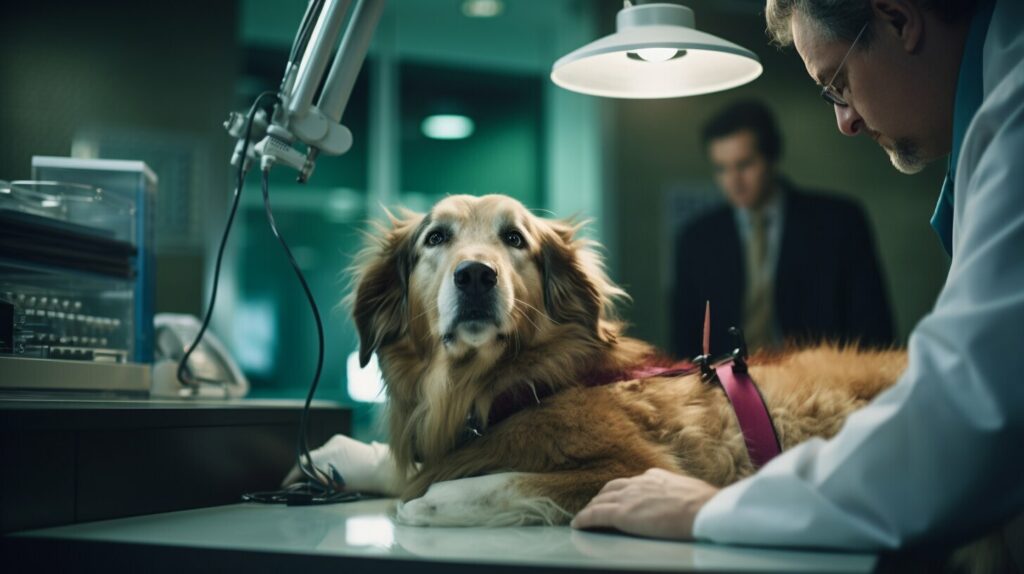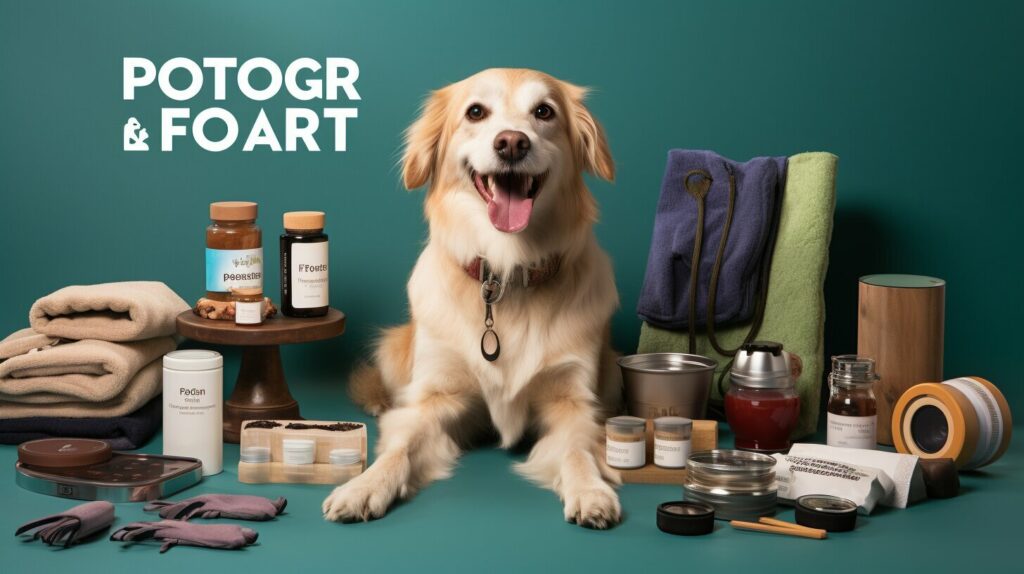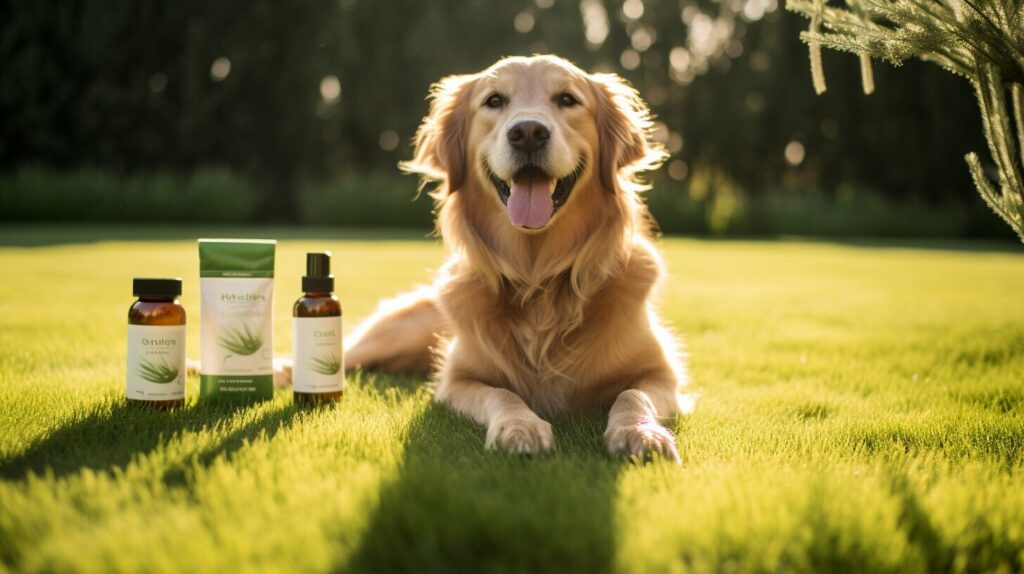If you’re a dog owner, you know that your pooch’s health is your top priority. As such, it’s essential to recognize and address any health concerns promptly. One of the signs that your dog may be experiencing health issues is pale gums. Contrary to popular belief, a dog’s gums should not be completely pink. Normal gums have a pigmented appearance, which can range from light pink to black, depending on the breed. Pale gums, on the other hand, can be a sign of a range of underlying health problems, which is why it’s crucial to understand what to look for and when to seek veterinary care.
The health of your dog is your responsibility. Therefore, it’s important to know the symptoms of pale gums and the steps to take to correct this condition. In this article, we will explore the causes of pale gums in dogs, the signs to look for, and the appropriate treatment options. We will also provide preventive measures to help maintain healthy gums in your furry friend.
Key Takeaways
- Pale gums can be a sign of health problems in dogs.
- Healthy dog gums have a pigmented appearance.
- Pale gums can occur due to dental issues, anemia, or systemic diseases.
- Getting timely veterinary care is crucial in treating dogs with pale gums.
- Preventive measures can help maintain healthy gums in dogs.
Understanding Gum Color in Dogs
As a responsible dog owner, it’s important to monitor your pet’s overall health, including their gum color. A dog’s gums should be a shade of pink, similar to the color of bubblegum, and feel moist to the touch.
To check your dog’s gum color, gently lift their lip and observe the gums above the canine teeth. If the gums appear pale or white, it could be a sign of a health problem and veterinary attention may be necessary.
Note that some dogs, such as those with dark pigmentation, may naturally have darker gums that make it difficult to detect any discoloration. In this case, you can check the color of their inner eyelids instead, which should also be a healthy shade of pink.
Gum color can be an indicator of your dog’s overall health, so it’s important to regularly check their gums and monitor any changes in color or texture.
Signs of Pale Gums in Dogs
If you suspect that your dog has pale gums, it’s essential to learn the signs and symptoms associated with this condition. Pale gums in canines are an indication of a potential underlying health issue that can affect your dog’s overall well-being.
One of the most noticeable signs of pale gums in dogs is a change in the color of their gum tissue. Healthy canine gums should have a pink coloration, but if they appear white or a pale shade, it can be a cause for concern.
Other signs indicating that your dog may have pale gums include weakness, lethargy, and unwillingness to eat or drink. Dogs with anemia often experience these symptoms along with pale gums.
If you notice any of these signs, it is critical to contact your veterinarian immediately. Your veterinarian will perform a physical examination and other diagnostic tests to determine the underlying cause of the pale gums and develop an appropriate treatment plan.
Causes of Pale Gums in Dogs
Pale gums in dogs can be an indication of an underlying health issue. Below are some common causes of pale gums in canines:
| Cause | Description |
|---|---|
| Anemia | A decrease in the number of red blood cells, leading to a lack of oxygen in the body. |
| Dental problems | Untreated gum disease, tooth decay, or an oral infection can cause gum discoloration. |
| Systemic illnesses | Conditions such as liver disease, kidney failure, or cancer can impact overall health and lead to pale gums. |
| Parasites | Heavy infestations of Parasites, such as fleas or ticks, can cause blood loss and lead to pale gums. |
| Injury or trauma | A physical injury or trauma can cause blood loss and lead to pale gums. |
Pale gums can also be a side effect of certain medications or anesthesia.
If you notice your dog’s gums are pale, it is important to visit a veterinarian to determine the underlying cause and receive appropriate treatment. Delaying treatment can lead to further health complications and negatively impact your dog’s overall health.
The Importance of Timely Veterinary Care
If you notice that your dog has pale gums, it’s crucial to seek immediate veterinary care. Pale gums can be a sign of serious health issues, and your veterinarian can help diagnose and treat any underlying conditions.
Your veterinarian will likely conduct a physical examination to check your dog’s overall health and look for any other concerning symptoms. They may also conduct blood tests to check for anemia or other underlying health issues. In some cases, imaging may be necessary to further diagnose the cause of pale gums.
The treatment for dogs with pale gums will depend on the underlying cause. Your veterinarian may prescribe medications, recommend dietary changes, or suggest dental procedures to address any dental issues. It’s important to follow your veterinarian’s recommendations closely to ensure the best possible outcome for your furry friend.
In some cases, supportive care measures may need to be taken at home. This may include providing a comfortable environment, monitoring hydration levels, and administering prescribed medications.
If your dog is showing any signs of an emergency, such as difficulty breathing or loss of consciousness, seek immediate veterinary care.
Remember, timely veterinary care is crucial when it comes to pale gums in dogs. By working closely with your veterinarian and following their recommendations, you can help ensure your furry friend’s overall health and well-being.
Diagnosing Pale Gums in Dogs
If you notice that your dog’s gums are paler than usual, it’s important to take prompt action to determine the underlying cause. A veterinarian will perform a physical examination of your dog and may also use blood tests and imaging to evaluate your dog’s overall health. These tests will help determine if your dog has an underlying condition that’s causing the pale gums.
During a physical examination, a veterinarian may check your dog’s gum color, hydration levels, and overall body condition. Blood tests can provide information on your dog’s red and white blood cell count and identify any potential illnesses or infections. Imaging, such as X-rays or ultrasounds, can help identify potential organ damage or obstructions.
If the veterinarian determines that an underlying condition is causing your dog’s pale gums, further diagnostic tests may be necessary to determine the specific illness or disease. In some cases, a tissue biopsy may be necessary to confirm a diagnosis.
It’s important to keep in mind that pale gums can be a symptom of a serious illness, so it’s crucial to seek veterinary care as soon as you notice any changes in your dog’s gum color or overall health.
Treating Dogs with Pale Gums
If your dog has pale gums, it is essential to seek veterinary care promptly. The treatment plan will depend on the underlying cause of the gum discoloration.
If the pale gums are due to dental issues, your veterinarian may recommend a professional dental cleaning or tooth extraction. In cases of anemia, your dog may require a blood transfusion, iron supplements, or medication to boost red blood cell production. Systemic diseases may require more specialized treatments, such as chemotherapy for cancer.
In addition to treating the underlying condition, supportive care measures may be necessary to aid in your dog’s recovery. Your veterinarian may prescribe medications to address pain or inflammation, or fluids to maintain hydration levels.
It is crucial to follow your veterinarian’s recommendations carefully throughout the treatment process to ensure the best possible outcome for your dog.
Preventing Pale Gums in Dogs
Pale gums in dogs can indicate poor health and potential underlying health issues. As a responsible pet owner, it’s essential to take preventive measures to maintain good gum health in your furry friend. Here are some tips:
Dental Hygiene
Good dental hygiene is essential for dogs. Brush your dog’s teeth regularly with a soft-bristled toothbrush and dog toothpaste. Dental chews or dental toys can also help keep your dog’s teeth clean.
Veterinary Check-ups
Regular veterinary check-ups are crucial in preventing pale gums and other health issues in dogs. Your veterinarian will perform a thorough examination, including checking your dog’s gums and teeth. They can also advise you on preventive treatments and answer any questions you may have about your dog’s health.
Proper Nutrition
A balanced diet is essential in maintaining good gum health in dogs. Feeding your dog high-quality food that meets their nutritional needs can prevent dental problems and related health issues.
Avoid Dangerous Substances
Substances such as tobacco, alcohol, and chocolate can be toxic to dogs and lead to gum discoloration and other health problems. Keep these items out of reach of your furry friend.
By following these preventive measures, you can help ensure your dog’s overall health and well-being, including their gum health.
Home Care for Dogs with Pale Gums
Once your veterinarian has identified the underlying cause of your dog’s pale gums and prescribed a treatment plan, there are several things you can do at home to support your pet’s recovery.
Provide a comfortable environment: It is important to create a comfortable and stress-free environment for your dog to rest and recover. Ensure that your pet has a warm and cozy spot to rest and avoid exposing them to loud noises or other stressors.
Monitor hydration levels: Pale gums can be a sign of dehydration, so it’s essential to monitor your dog’s water intake. Offer fresh, clean water regularly, and encourage your pet to drink by adding a small amount of low-sodium chicken broth or water to their food.
Administer prescribed medications: Follow your veterinarian’s instructions carefully when administering any prescribed medications. Be sure to give your dog the correct dosage and duration of treatment, and avoid discontinuing medication without consulting your vet.
Provide a balanced diet: A balanced diet with appropriate nutrition is crucial for a dog’s overall health and well-being. Ensure that your pet is consuming the recommended amounts of protein, carbohydrates, and other essential nutrients to support their recovery.
If you notice any changes in your dog’s behavior or condition while they’re at home, contact your veterinarian immediately. They can help you determine if further treatment or care is necessary and guide you through the next steps.
When to Seek Emergency Care
While it is important to seek veterinary care for your dog with pale gums, there may be situations where immediate attention is necessary. If your dog is experiencing other symptoms in addition to pale gums, such as lethargy, difficulty breathing, vomiting or diarrhea, it is imperative to seek emergency care immediately. This may indicate an underlying systemic illness that requires swift intervention.
If your dog has ingested a toxic substance or has been involved in an accident, emergency care may also be necessary to prevent further harm. It is essential to keep your veterinarian’s contact information readily available in case of emergency.
Remember, your dog’s health is of the utmost importance, and seeking prompt veterinary care is crucial to their overall well-being.
Conclusion
In conclusion, recognizing and addressing pale gums in dogs is crucial for maintaining their overall health and well-being. Pale gums can be a sign of serious underlying health issues, and it is important to seek timely veterinary care if you notice any abnormalities.
Remember to monitor your dog’s gum color regularly and watch out for symptoms such as lethargy, loss of appetite, and difficulty breathing. Early detection and treatment of pale gums can prevent further complications and provide your furry friend with the best chance of recovery.
If your dog does develop pale gums, consult with your veterinarian for personalized advice and treatment plans. Treatment options may include medication, dietary adjustments, or surgery, depending on the underlying cause.
In addition to seeking veterinary care, you can also take preventive measures to help maintain healthy gums in your dog. Regular dental hygiene, veterinary check-ups, and a balanced diet can all contribute to preventing gum discoloration and related health issues.
Remember, as a responsible pet owner, it is your duty to provide your dog with the best possible care. By staying vigilant and taking prompt action when necessary, you can help ensure that your furry friend stays happy and healthy for years to come.
FAQ
Q: What are pale gums in dogs?
A: Pale gums in dogs refer to a condition where a dog’s gums appear lighter or less pink than usual. It can be an indication of an underlying health issue and should be addressed by a veterinarian.
Q: How can I check my dog’s gum color?
A: To check your dog’s gum color, lift their lip gently and observe the gums near their teeth. Healthy gums should be pink in color. If they appear pale or white, it is a cause for concern.
Q: What are the signs of pale gums in dogs?
A: Signs of pale gums in dogs may include a loss of pink coloration in the gums, lack of moisture in the gums, weakness, lethargy, loss of appetite, and difficulty breathing.
Q: What causes pale gums in dogs?
A: Pale gums in dogs can be caused by various factors, including dental issues, anemia, blood loss, systemic diseases, and other underlying health conditions. A veterinarian can determine the specific cause.
Q: Why is timely veterinary care important for dogs with pale gums?
A: Timely veterinary care is crucial for dogs with pale gums because it can be a sign of serious health issues. A veterinarian can diagnose and treat the underlying cause, which helps ensure the dog’s overall health and well-being.
Q: How is pale gums in dogs diagnosed?
A: The diagnosis of pale gums in dogs involves a thorough physical examination by a veterinarian. Additional diagnostic tests such as blood tests and imaging may be conducted to determine the underlying cause.
Q: What are the treatment options for dogs with pale gums?
A: Treatment for dogs with pale gums depends on the underlying cause. It may involve dental procedures, medications, blood transfusions, or other specific treatments recommended by a veterinarian.
Q: How can I prevent pale gums in my dog?
A: You can prevent pale gums in your dog by maintaining good dental hygiene, scheduling regular veterinary check-ups, ensuring a balanced diet, and promptly addressing any health issues that arise.
Q: How can I care for a dog with pale gums at home?
A: When caring for a dog with pale gums at home, it is important to provide a comfortable environment, monitor hydration levels, administer prescribed medications as directed, and follow any other instructions provided by the veterinarian.
Q: When should I seek emergency care for a dog with pale gums?
A: Emergency care for a dog with pale gums should be sought if the dog is exhibiting severe symptoms such as difficulty breathing, collapse, excessive bleeding, or any other signs of distress. It is best to contact a veterinarian immediately.



